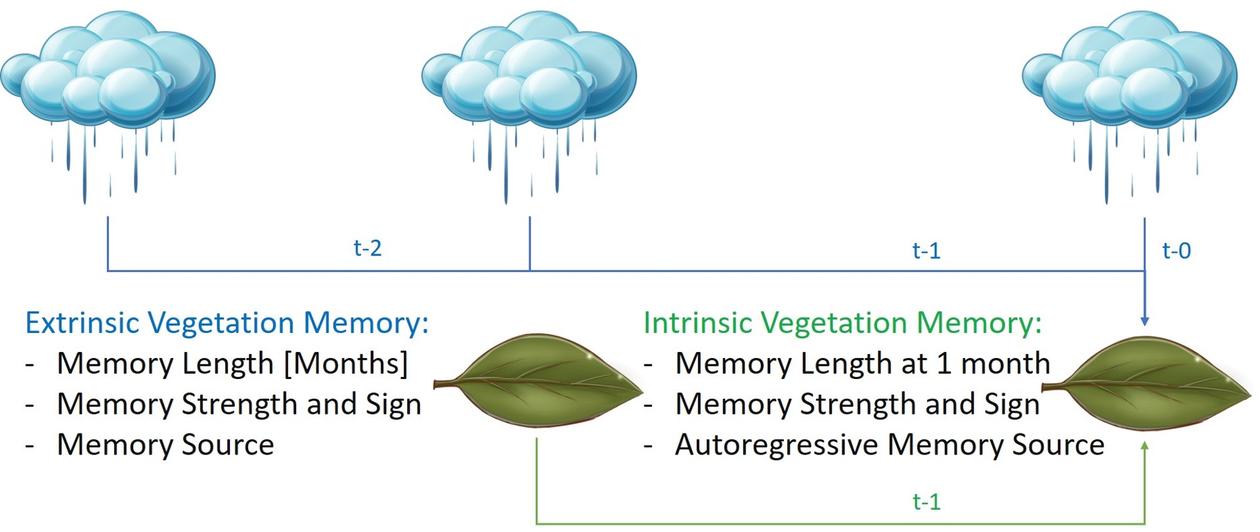Veg.Mem project
Remote sensing of vegetation memory characteristics across global drylands

Hovedinnhold
Vegetation memory has been used as an important proxy for ecosystem recovery rates, potentially a key component of vegetation resilience. In particular, strong vegetation memory effects have been identified in dryland regions coinciding with decreased vegetation sensitivity towards climatological drivers. A recent approach by Ogle et al. (2015) distinguishes intrinsic and extrinsic vegetation memory components. Here, we aim to test the components and drivers of vegetation memory in dryland regions using state-of-the-art climate reanalysis data and refined approaches to identify vegetation memory characteristics. This has led to novel insights into spatial patterns of vegetation memory characteristics across four distinct predominantly dryland regions (south-western Europe, contiguous United States, the Caatinga, and Australia).
We show that
- dryland regions are characterised by strong vegetation memory (intrinsic and extrinsic)
- it is possible to distinguish intrinsic and extrinsic vegetation memory to a hitherto unachieved degree using climate reanalysis data sets
- the link between intrinsic vegetation memory and resilience may be an oversimplification
- dryland vegetation does not react to bioclimatic forcing in the same way across the Earth.
For details, see Erik Kusch's github.


